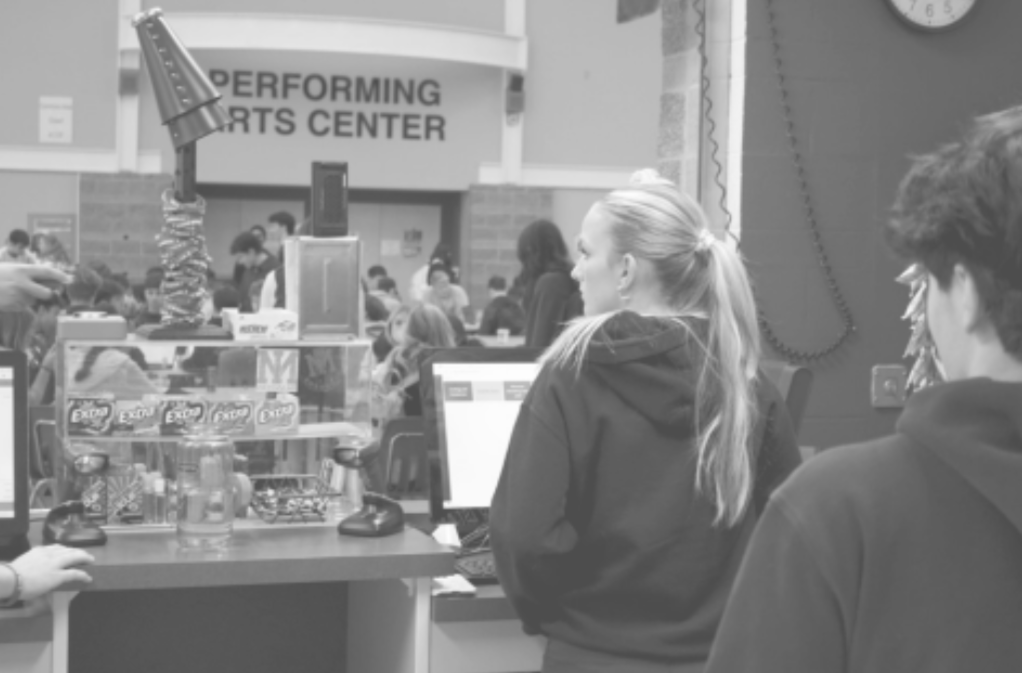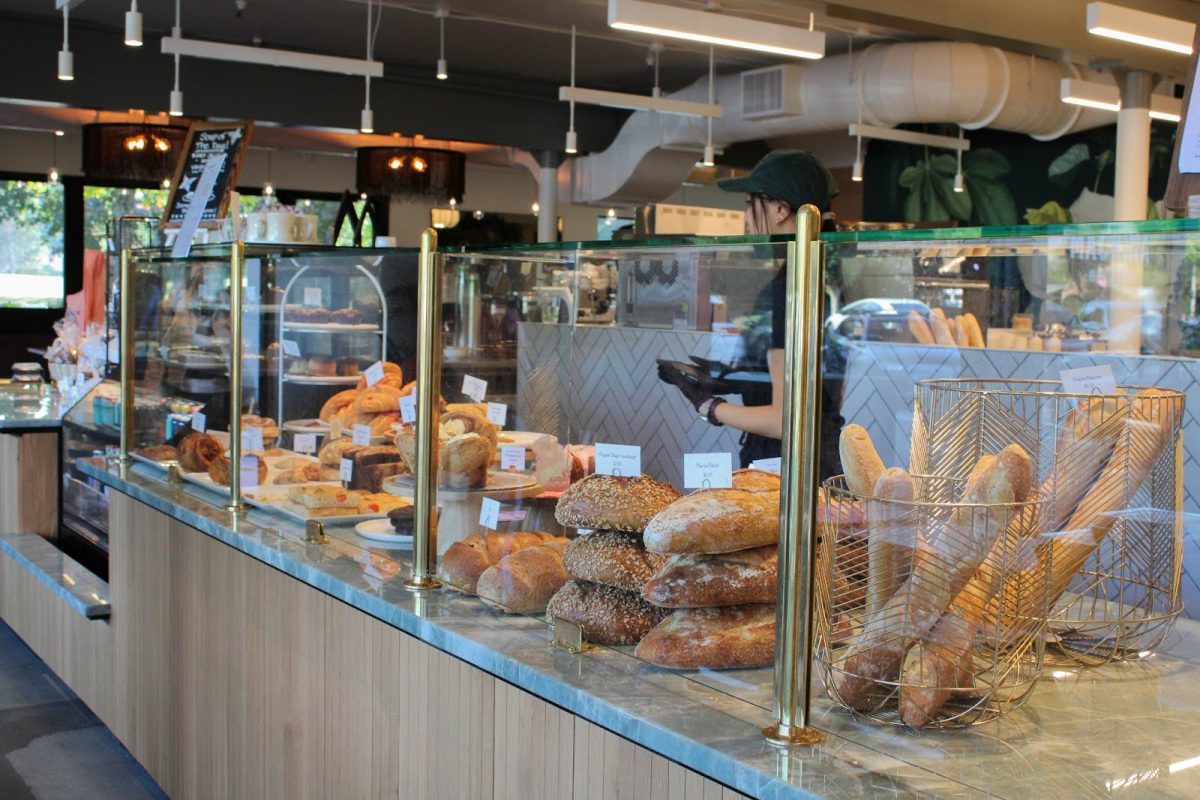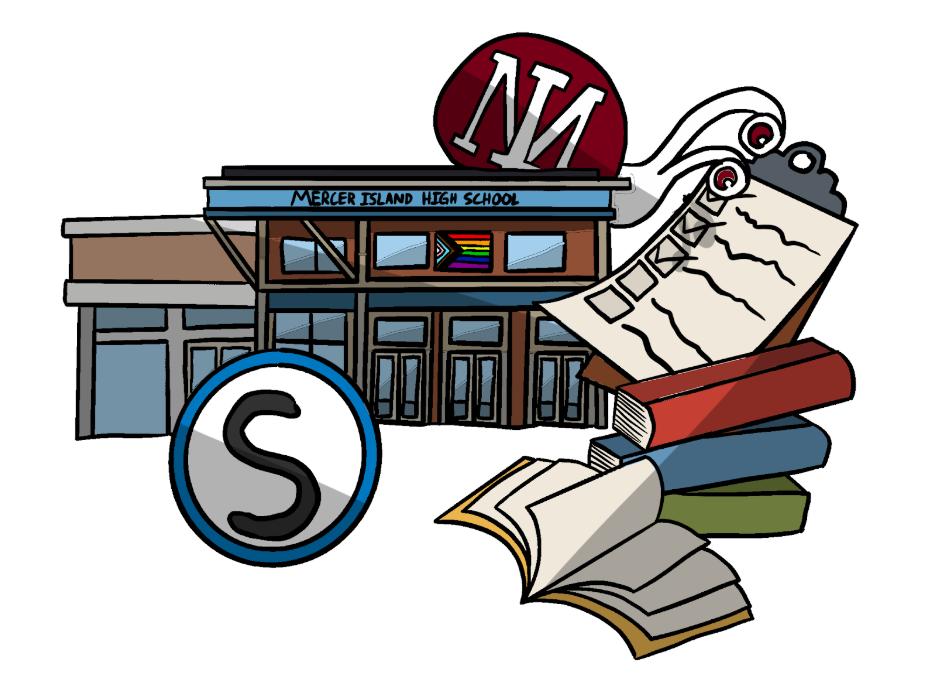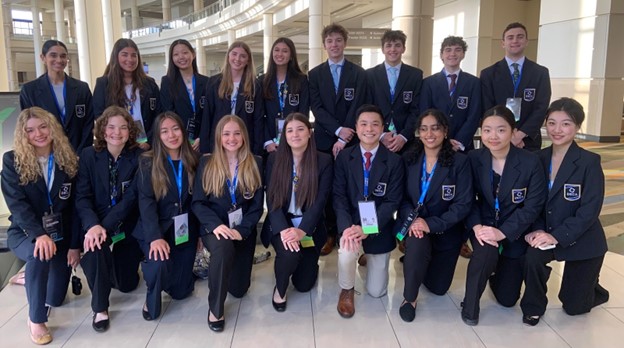Basketballs sail through the air as customers aim for the hoop positioned above the entrance to the student store’s backroom, vying for a free bracelet, but often missing and hitting the students themselves. Students walk around in Cookie Monster suits, and shouts can be heard over the popular music attracting people to the storefront.
A mere walk into the backroom of the store shows the brunt of their work, however; colorful graphics line the walls, instructing students on how to properly prepare pizza bagels, taquitos, strawberry lemonade boba and other assorted snacks.
The store is run during fifth period, and is typically open during both lunches. Employees are selected following an application process—this year, the store has 15 employees, and tasks are split amongst them.
“[As for prerequisites,] students have to have taken Marketing One,” Tapp said. “In the past few years, I’ve made students fill out an application and do an interview, like a job. We also look at their attendance and things like that, because in the student store, it’s very much dependent on kids being able to work every day.”
The student store’s success also depends heavily on the collaboration between its employees.
“There’s a lot of different personalities in the store, so sometimes working together can be a challenge, but so far so good,” student store employee Rose Haba said. “We have to hold each other accountable, which I think is both helpful but can also be challenging.”
The store does make money off of their transactions, which they can use to purchase new products and appliances. For example, they recently purchased a new fridge. The leftover profit goes to benefit the school’s DECA program—in which participation is mandatory for all students taking business classes at the high school.
“We reduce the overall [travel] costs for all students [flying to international DECA competitions,]” Tapp said. “We also provide scholarships for students that need more support.”
There are some roadblocks that the store has encountered in the past few years. For example, the student store used to partner with food services, where students could enter their student number to make purchases, but switched to a system that allowed them to take credit card purchases.
“Switching from student IDs to card made a huge impact,” Haba said. “Now students actually have to think about paying, instead of just typing in their number. So we’ve talked a lot about how to combat that, and other ways that we can have kids pay.”
The introduction of Yondr pouches has created another obstacle.
“It reduced people coming and buying stuff because they thought they weren’t gonna be able to pay,” Haba said. “I just had a couple people come up to me and say ‘Oh, I only have Apple Pay,’ so I can’t pay. I [have to say], ‘No, we have a Yondr unlocker.’”
The store boasts a large collection of merch—which they design themselves—and various prepackaged food and drink items. While they do sometimes rotate what they sell throughout the year, many of the offerings are student-requested.
“Before we opened, we sat down and we interviewed a bunch of kids around school to see what they would buy, and then we made a list and chose the stuff that we thought would sell the best,” Haba said.
At its core, the student store gives its employees practical business experience. While Tapp oversees the class, Haba acknowledges that the “students are very much in charge.”
“We got a lot of say in what we sell, what happens, the merch that we make,” she said. “It kind of just feels like we’re running our own little company.”









